March 2024
By Kelsey Davenport
North and South Korea exchanged threats after the North Korean leader abandoned the goal of unifying the peninsula and labeled South Korea a hostile country. Despite the rising tensions, the Biden administration assesses that there is no immediate threat of a North Korean attack.
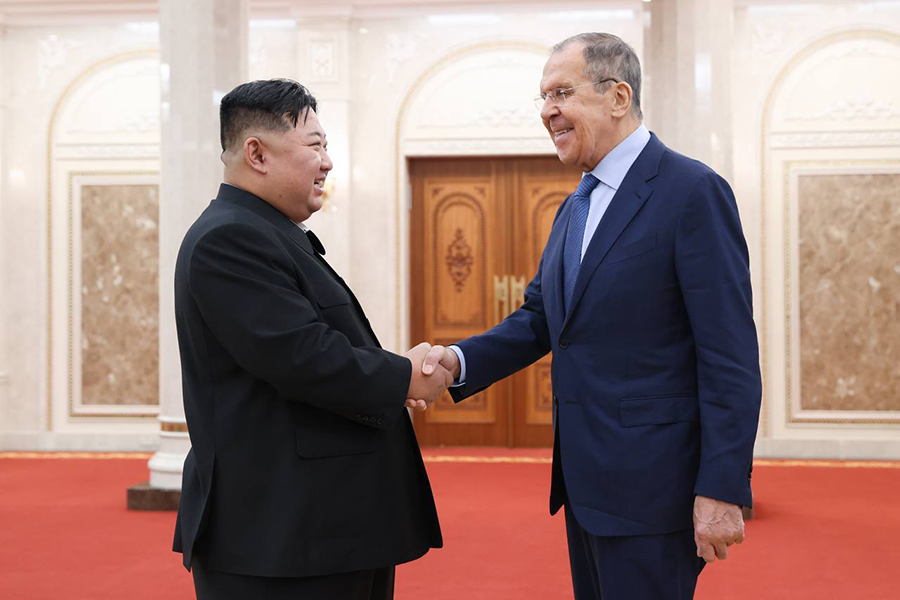 In December, North Korean leader Kim Jong Un forsook a long-standing policy of achieving unification with South Korea at some point in the indefinite future. (See ACT, January/February 2024.) As a result of the shift, Kim said on Feb. 8 that North Korea can legally “annihilate” South Korea now that it is defined as a “hostile country.”
In December, North Korean leader Kim Jong Un forsook a long-standing policy of achieving unification with South Korea at some point in the indefinite future. (See ACT, January/February 2024.) As a result of the shift, Kim said on Feb. 8 that North Korea can legally “annihilate” South Korea now that it is defined as a “hostile country.”
He said North Korea has adopted a “national policy to occupy and pacify” South Korea “in case of emergency.” North Korea’s military advances and weapons development give the country the capability to implement that policy, he added.
South Korea still supports unification, but the administration of President Yoon Suk Yeol has threatened to respond to North Korean provocations and is taking steps to increase military readiness.
In a Jan. 13 speech, Yoon called the Kim regime “irrational” and said that a “sensible regime would give up nuclear weapons and find a way for its people to live.” He said that Kim’s comments and the country’s recent military drills “constitute a provocation and threat.”
Yoon also accused North Korea of conducting “psychological warfare and activities” against South Korea and said that South Korea expected provocations from North Korea, including at the border between the two countries, over the course of the year.
South Korean Defense Minister Shin Won-sik said during a Jan. 24 visit to an air force facility that the military must be prepared to respond to North Korea, including quickly eliminating the “enemy leadership” if Pyongyang decides to go to war.
Despite the rhetoric coming from Pyongyang and Seoul, the Biden administration dismissed suggestions that North Korea is preparing for war.
Jung Pak, the senior U.S. official for North Korea at the State Department, said in a press briefing on Feb. 15 that the United States does not see any signals of “an imminent or direct attack at this point.”
Pak said Kim’s posture has not fundamentally changed, despite the decision to abandon unification.
But North Korea is continuing to develop weapons systems that are more difficult to defend against and conducting live-fire exercises, including near the Northern Limit Line, the maritime boundary between North and South Korea.
Yoshimasa Hayashi, Japan’s chief cabinet secretary, said on Feb. 15 that North Korea’s testing of missiles “from various platforms” strengthens the country’s “surprise attack capabilities.”
In January, North Korea tested new missiles, including a solid-fueled intermediate-range ballistic missile, a strategic cruise missile, and a submarine-launched cruise missile (SLCM). The systems tested are more difficult to intercept using missile defenses and are nuclear capable, according to the state-run Korean Central News Agency (KCNA). The cruise missiles also give North Korea more launch options, which makes it more difficult to preemptively target the country’s systems.
The strategic cruise missile contributes to North Korea’s “rapid counterattack posture,” KCNA said in a Jan. 31 statement.
After the SLCM launch on Jan. 28, KCNA said that Kim oversaw the launch and emphasized that “nuclear weaponization of the navy is an urgent task” and a “core requirement for building the state nuclear strategic force.”
The intermediate-range ballistic missile, tested on Jan. 14, included a maneuverable reentry vehicle, which uses a technology that can be used to make the missile more challenging for missile defenses to shoot down.
KCNA said the test successfully verified “the gliding and maneuvering characteristics of intermediate-range hypersonic maneuverable controlled warhead and the reliability of newly developed multi-stage high-thrust solid-fuel engines.”
The North Korean missile test had “nothing to do with the regional situation,” KCNA reported.
Although the Biden administration assesses that North Korea’s missile advances and rhetoric are not signs of an imminent attack, Pranay Vaddi, the U.S. National Security Council senior director for arms control, warned that the “nature of North Korea as a threat in the region could drastically change over the coming decade.”
Vaddi, speaking at the Center for Strategic and International Studies on Jan. 18, said that the “unprecedented level of cooperation in the military sphere” between Russia and North Korea could improve the North’s capabilities.
The United States and South Korea must continue to ensure that U.S. extended deterrence remains credible as the threat evolves, Vaddi said.





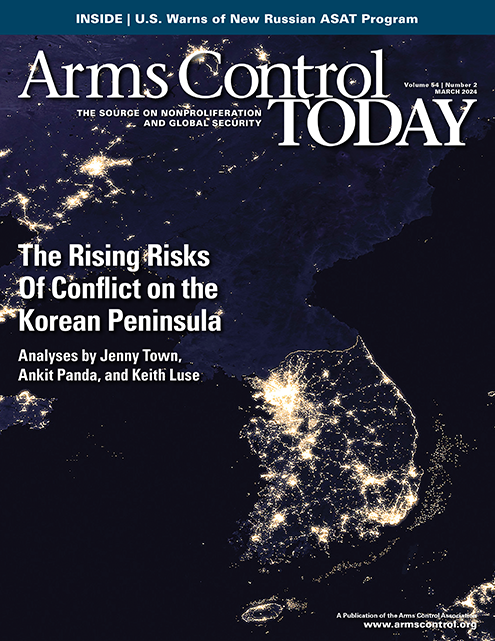
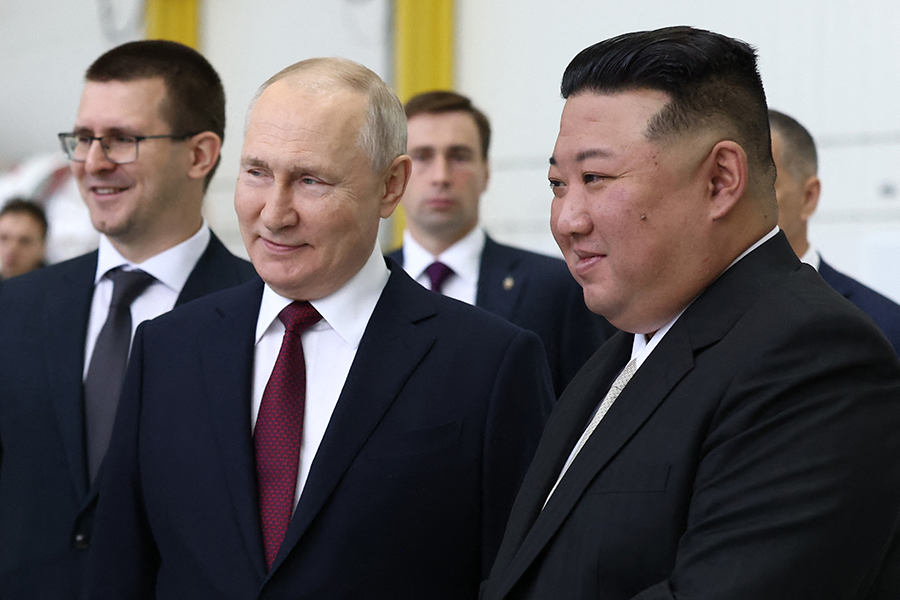 In a Jan. 4 press briefing, John Kirby, the National Security Council coordinator for strategic communications, said that Russia attacked Ukraine using North Korean ballistic missiles with a range of about 900 kilometers on Dec. 30 and Jan. 2.
In a Jan. 4 press briefing, John Kirby, the National Security Council coordinator for strategic communications, said that Russia attacked Ukraine using North Korean ballistic missiles with a range of about 900 kilometers on Dec. 30 and Jan. 2.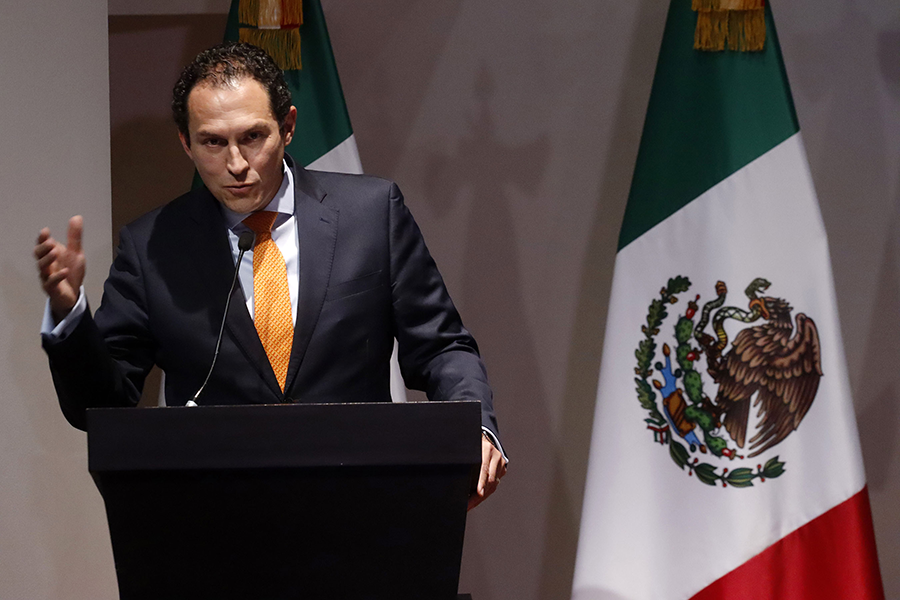 The suit accuses six companies, including Smith & Wesson and Sturm, Ruger & Co., of negligent practices that facilitate the trafficking of more than 500,000 guns annually to Mexican drug cartels, exacerbating gun violence in that country.
The suit accuses six companies, including Smith & Wesson and Sturm, Ruger & Co., of negligent practices that facilitate the trafficking of more than 500,000 guns annually to Mexican drug cartels, exacerbating gun violence in that country.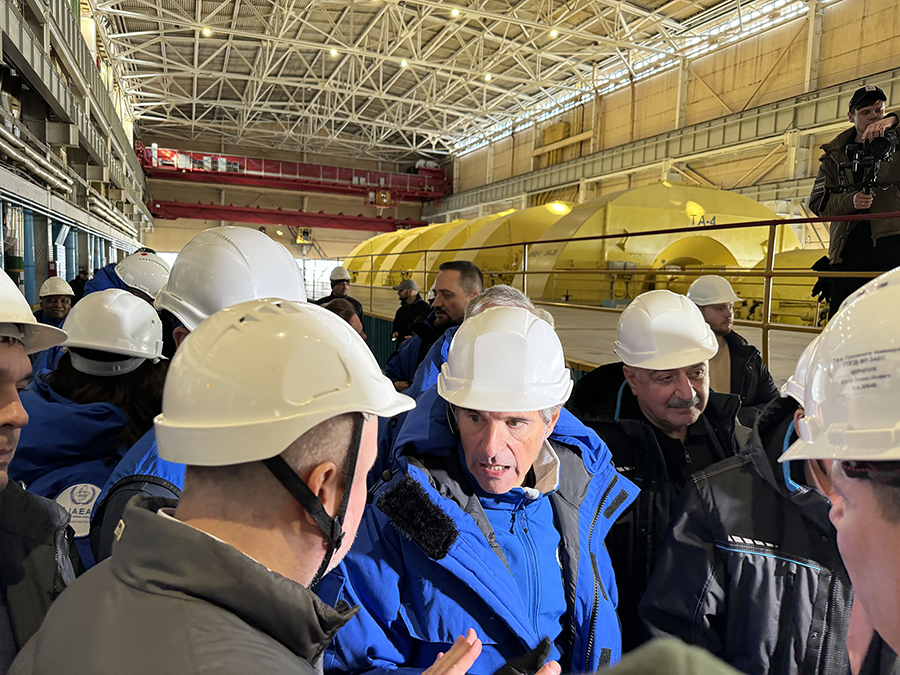 IAEA Director-General Rafael Mariano Grossi visited the facility on Feb. 7, a week after Russia announced that workers employed by Energoatom, the Ukrainian nuclear energy company, would no longer be allowed to work at the site.
IAEA Director-General Rafael Mariano Grossi visited the facility on Feb. 7, a week after Russia announced that workers employed by Energoatom, the Ukrainian nuclear energy company, would no longer be allowed to work at the site.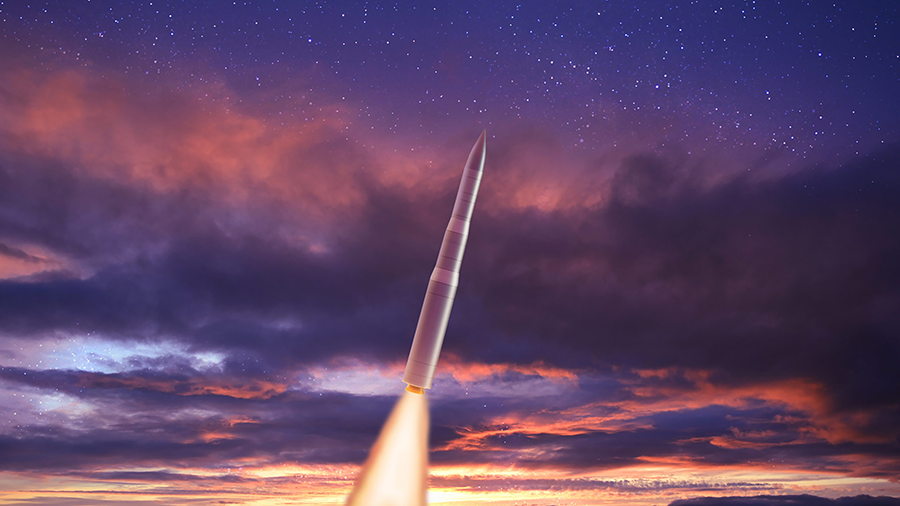 The cost per unit for the Sentinel system originally was projected to be $118 million and now is estimated at $162 million, putting the projected total program cost at roughly $130 billion over the next decade, up from an estimated baseline of $96 billion, the Air Force told Defense News.
The cost per unit for the Sentinel system originally was projected to be $118 million and now is estimated at $162 million, putting the projected total program cost at roughly $130 billion over the next decade, up from an estimated baseline of $96 billion, the Air Force told Defense News. If the decision holds, it means that the only remaining bilateral nuclear arms control agreement limiting the world’s largest nuclear weapons arsenals will expire on Feb. 5, 2026, along with its strict verification provisions.
If the decision holds, it means that the only remaining bilateral nuclear arms control agreement limiting the world’s largest nuclear weapons arsenals will expire on Feb. 5, 2026, along with its strict verification provisions.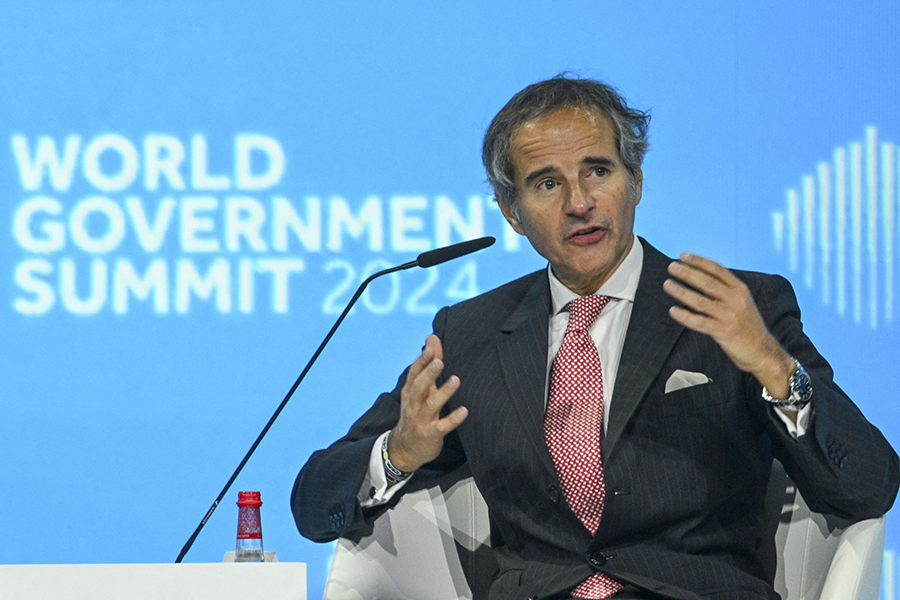 IAEA Director-General Rafael Mariano Grossi said on Feb. 13 that Iran is “not entirely transparent” regarding its nuclear activities, which “increases dangers,” particularly given the “accumulation of complexities” in the Middle East.
IAEA Director-General Rafael Mariano Grossi said on Feb. 13 that Iran is “not entirely transparent” regarding its nuclear activities, which “increases dangers,” particularly given the “accumulation of complexities” in the Middle East. Russia used K-51 grenades filled with chloropicrin, a World War I-era chemical substance, 229 times since the beginning of January, according to a Feb. 9 statement from the Armed Forces of Ukraine published via the Ukrainian Army’s Telegram channel.
Russia used K-51 grenades filled with chloropicrin, a World War I-era chemical substance, 229 times since the beginning of January, according to a Feb. 9 statement from the Armed Forces of Ukraine published via the Ukrainian Army’s Telegram channel. As chair of the Global Partnership Against the Spread of Weapons of Mass Destruction for 2024, Italy is responsible for setting priorities for the 31-member initiative. The Global Partnership, which was established in 2002 by the Group of Eight industrialized countries, works to prevent the proliferation of chemical, biological, radiological, and nuclear weapons.
As chair of the Global Partnership Against the Spread of Weapons of Mass Destruction for 2024, Italy is responsible for setting priorities for the 31-member initiative. The Global Partnership, which was established in 2002 by the Group of Eight industrialized countries, works to prevent the proliferation of chemical, biological, radiological, and nuclear weapons.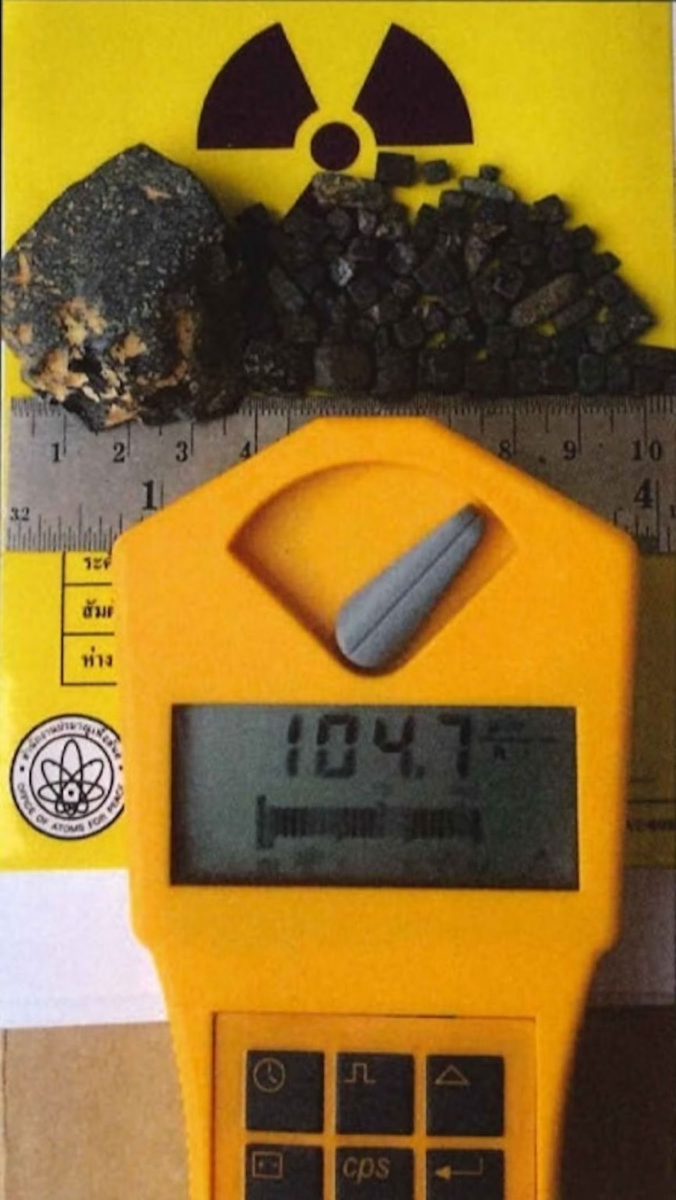 The superseding indictment against Takeshi Ebisawa of Japan and co-defendant Somphop Singhasiri of Thailand on charges of “conspiring with a network of associates to traffic nuclear materials from Burma to other countries” was made public Feb. 21 by the U.S. Attorney’s Office for the Southern District of New York.
The superseding indictment against Takeshi Ebisawa of Japan and co-defendant Somphop Singhasiri of Thailand on charges of “conspiring with a network of associates to traffic nuclear materials from Burma to other countries” was made public Feb. 21 by the U.S. Attorney’s Office for the Southern District of New York.